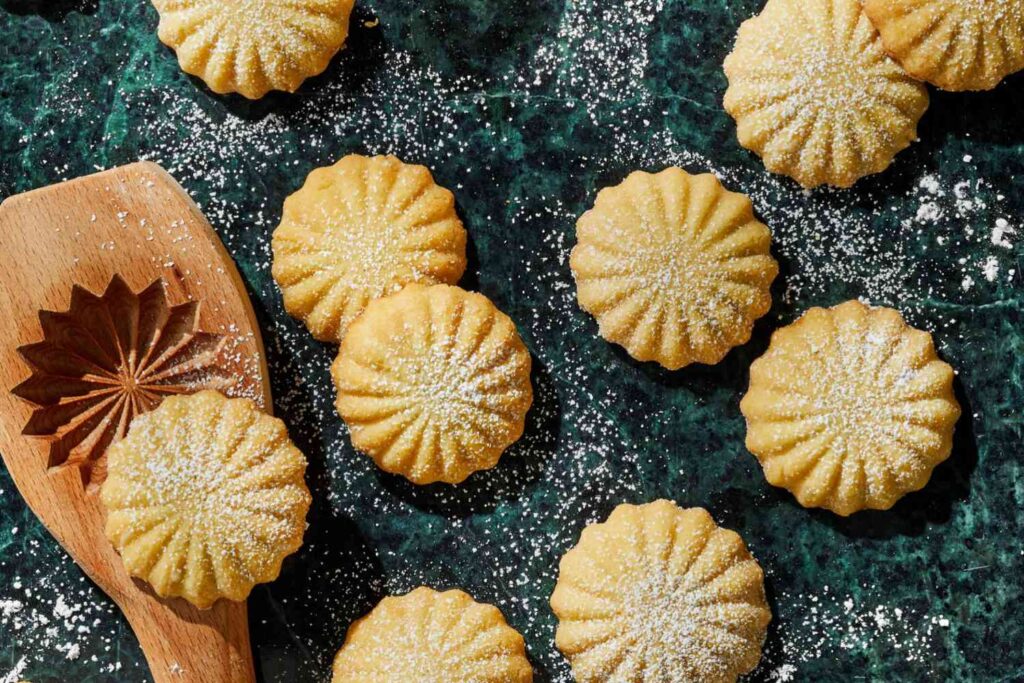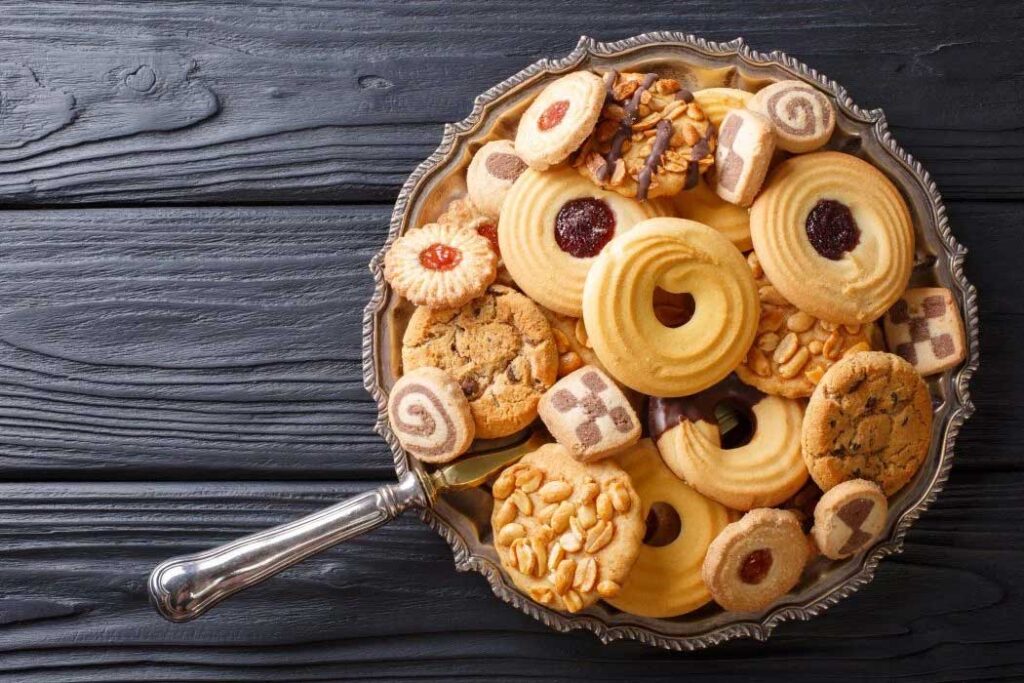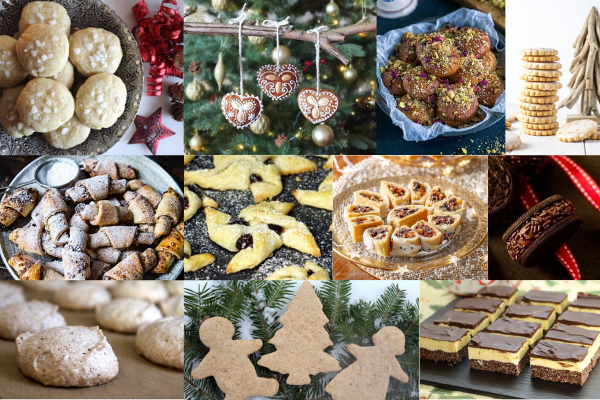Cookies, the delightful treats that transcend cultural boundaries, have embedded themselves as sweet ambassadors of diverse culinary traditions. In every corner of the globe, these small, baked delights hold unique stories, reflecting the heritage and flavors of the regions they originate from.
United in Sweetness, Diverse in Ingredients

Cookies, known by various names like biscuits, galletas, or kekse, are an integral part of global culinary cultures. What unites them is their simplicity—basic ingredients like flour, sugar, and butter—but the magic lies in the regional twists that transform them into something special. In the Middle East, Ma’amoul cookies are crafted with dates, nuts, and aromatic spices, celebrating the richness of the region. Meanwhile, Italian biscotti are renowned for their twice-baked crispness, often paired with a robust espresso, embodying the elegance of Mediterranean indulgence.
Amid this diversity, a universal truth emerges: cookies are not merely confections; they are expressions of culture, history, and the unique palates that define a people.
The Ritual of Cookie Sharing: A Global Tradition
In cultures around the world, the act of sharing cookies transcends mere consumption—it symbolizes hospitality, celebration, and connection. In the United States, the tradition of leaving cookies for Santa Claus on Christmas Eve is a nostalgic practice that spans generations. This simple act not only satisfies the sweet tooth but also reinforces the spirit of giving and togetherness. In the luxury spa in Toronto, they will always welcome you with a few delicious cookies that will perfectly please you with the treatment.
Similarly, in Sweden, the concept of “fika” involves a coffee break accompanied by cookies. This daily ritual is more than just a pause; it’s a social gathering where colleagues, friends, and family come together to share stories, laughter, and, of course, a plate of freshly baked cookies. The act of sharing these delightful treats becomes a medium through which relationships are nurtured and strengthened.
Culinary Alchemy: Cookies as Cultural Artifacts
Delving deeper into the cultural significance of cookies unveils the culinary alchemy that transforms simple ingredients into edible works of art. Take, for example, the intricate Hamentashen from Jewish tradition. These triangular pastries, filled with sweet poppy seed or fruit fillings, are crafted during the festive Purim celebration. Their three-cornered shape symbolizes the villain’s hat, creating a delicious connection between culinary artistry and cultural storytelling.
In India, the aromatic Ghee-filled Besan Ladoo is an integral part of Diwali celebrations. The sweet aroma of clarified butter and gram flour wafts through households, signifying the triumph of light over darkness. Each bite becomes a sensorial journey, echoing centuries-old traditions and cultural symbolism.
The Cookie Revolution: Modern Twists on Timeless Classics
While cookies preserve cultural heritage, they are not immune to the winds of change. The 21st century has witnessed a cookie revolution, with innovative twists on traditional recipes and the emergence of fusion flavors that defy geographical boundaries. A health clinic in Marietta GA explains how today we are keeping up with the times by making organic and delicious changes to recipes so that people with chronic diseases can also enjoy cookies.
In Japan, the delicate art of creating Wagashi cookies has taken a modern turn. Traditionally made for tea ceremonies, these treats now boast matcha-infused chocolate and unique textures that cater to contemporary tastes. Similarly, in the United Kingdom, the humble shortbread has undergone a renaissance with unconventional additions like lavender or chili, redefining what was once considered a classic. Milk chocolate edibles come in different flavors so you can experiment or just enjoy the classics.
The Artistry of Cookie Presentation: A Feast for the Eyes

Beyond taste and tradition, cookies are also a canvas for artistic expression. In cultures like Morocco, the making of Ma’amoul is not just a culinary endeavor but an art form. Intricate wooden molds passed down through generations, are used to imprint decorative patterns on these delectable delights. The result is not just a cookie but a masterpiece, a fusion of taste and aesthetics that showcases the commitment to craftsmanship. Science tutors in Boulder encourage their students to do creative work like cooking for which they are rewarded in the form of deliciously prepared cookies, preparing them for big tests along the way.
In Mexico, the vibrant hues of traditional sugar skull cookies, or calaveras, are a testament to the artistic flair ingrained in their culture. These cookies, crafted during the Day of the Dead celebrations, transform a somber occasion into a visually stunning tribute to the departed. The fusion of creativity and culinary skill elevates these cookies to more than just a sweet treat; they become edible sculptures, bridging the gap between culinary and visual arts. Chefs dressed in military apparel pay tribute to the warriors by presenting their amazing realistic cake sculptures.
Cookies as Cultural Narratives: Stories in Every Bite
Digging deeper into the cultural significance of cookies unveils the rich narratives embedded in these bite-sized wonders. In South Africa, the making and sharing of Koeksisters, a twisted and syrup-drenched confection, have historical roots that stretch back to the Cape Malay community. With influences from Indonesian and Dutch traditions, Koeksisters carry the story of migration, adaptation, and cultural amalgamation. With the help of excellent hospitality courses, you can learn more about the traditions of these people and their cuisine.
Similarly, in China, the Mooncake serves as a symbolic link to the Mid-Autumn Festival, a time of family reunion. The intricate designs on the surface of these pastries often depict scenes from Chinese mythology, transforming each Mooncake into a canvas that narrates tales of celestial beings and ancient folklore. As families gather to enjoy these treats, they also share the stories woven into the very fabric of their cultural identity. Try to create a home atmosphere in which you will prepare these cookies for your family, but while you are in the kitchen, check your pipes, because due to long use and accumulation of limescale, they can burst, and then you can call an emergency restoration service in Charlotte.
Sustainable Cookies: A Global Movement Towards Eco-Friendly Indulgence
As the world grapples with environmental challenges, the concept of sustainable cookies has emerged as a beacon of hope. Bakers and enthusiasts worldwide are reimagining traditional recipes with an eco-friendly twist, incorporating locally sourced, organic ingredients and adopting mindful baking practices. Even individuals in their well-equipped kitchens like the kitchens of houses in Boca Falls turn to organic ingredients in the preparation of cookies.
In Scandinavia, the tradition of foraging for berries to flavor cookies has taken on a new dimension with a focus on sustainability. The Nordic philosophy of “lagom,” meaning just the right amount, extends to the ingredients used in baking, promoting a balanced and eco-conscious approach. Similarly, in Costa Rica, where the cultivation of cacao has deep roots, there is a growing movement towards supporting fair trade and sustainable practices in the production of chocolate used in traditional cookies like Tres Leches. Here you can also visit a real traditional museum of cocoa and chocolate which, under the access control system from Philadelphia, preserves various historical items related to the production of cakes and chocolate.
Cookies in the Digital Age: Sharing Recipes Across Borders
In the age of globalization, cookies have found a new platform for cultural exchange—the internet. Social media platforms and online communities have become virtual cookie jars where enthusiasts from different corners of the world share their unique recipes, techniques, and cultural anecdotes related to these sweet delights. An Internet provider that manages IT services in San Antonio provides its users with excellent Internet traffic, with the help of which they can stay in touch with other amateur chefs through platforms for sharing recipes and impressions.
Digital platforms provide a space for the fusion of traditional recipes with modern twists. An Italian baker might share a recipe for a classic cantucci while someone from India adds a touch of cardamom to the mix. This virtual exchange not only preserves cultural heritage but also encourages a global conversation where cookies become the language of sweetness, transcending linguistic and cultural barriers. Google ads open the world of cookies to the general public, from festivals to culinary achievements, but if your Google ads are suspended, first contact a professional who will fix it for you.
Cookie Festivals: Celebrating Sweet Diversity
Around the world, cookie festivals have become celebrations of culinary diversity, bringing together bakers, confectioners, and cookie enthusiasts to revel in the vast array of flavors and traditions. These festivals serve as melting pots where cultures blend through the universal language of cookies. Cookies arranged on beautiful cheese boards with creative decorations are eye-catching at festivals like this.
In the United States, National Cookie Day has evolved into a nationwide celebration where people exchange cookies, recipes, and stories. Similarly, in Sweden, the annual “Kakfestival” is a homage to the country’s rich cookie culture. Bakers from different regions showcase their unique interpretations of traditional recipes, creating a sensory feast that reflects the dynamic nature of culinary traditions. With a look back at history and brave warriors who defended their country on their horses with traditional saddle blankets.
Cookies and Social Change: Empowering Communities Through Baking

Beyond their culinary and cultural significance, cookies have become agents of social change, empowering communities and fostering inclusivity. In Australia, the social enterprise “Two Good Bakers” employs individuals who have experienced homelessness to create delectable cookies. The initiative not only provides employment opportunities but also highlights the transformative power of baking in building resilience and community. Organizations like Readathon school fundraisers empowering young people to read along the way will help in these movements.
Similarly, in Brazil, the “Biscoito da Vida” project supports LGBTQ+ youth by training them in the art of cookie baking. The colorful and creative cookies produced by these young bakers not only generate income but also serve as symbols of acceptance and pride. Cookies, in this context, become more than just a treat; they become tools for social impact and positive change. You can book cheap flights during the festival and contribute to the development of this movement.
The Future of Cookies: Blurring Boundaries and Embracing Diversity
As we gaze into the future, the trajectory of cookies seems to be one of continued innovation, cultural exchange, and a celebration of diversity. The boundaries between traditional and contemporary, local and global, sweet and savory, are blurring as cookies evolve to reflect the dynamic nature of our interconnected world.
In Japan, experimental flavors like matcha and red bean find their way into classic cookie recipes, creating a fusion of traditional Japanese tastes with global influences. Meanwhile, in the heart of Africa, the use of indigenous ingredients in cookies showcases a commitment to preserving local flavors while contributing to the global cookie conversation.
In essence, the global cookie jar is expanding, embracing new ingredients, techniques, and cultural narratives. As we indulge in these sweet delights, we partake in a global feast that transcends borders, creating a shared experience that unites us in our love for the universal language of cookies. So, let us savor the richness of this ever-evolving cookie landscape, appreciating not only the flavors but also the stories, artistry, and positive impact they bring to our diverse world.
